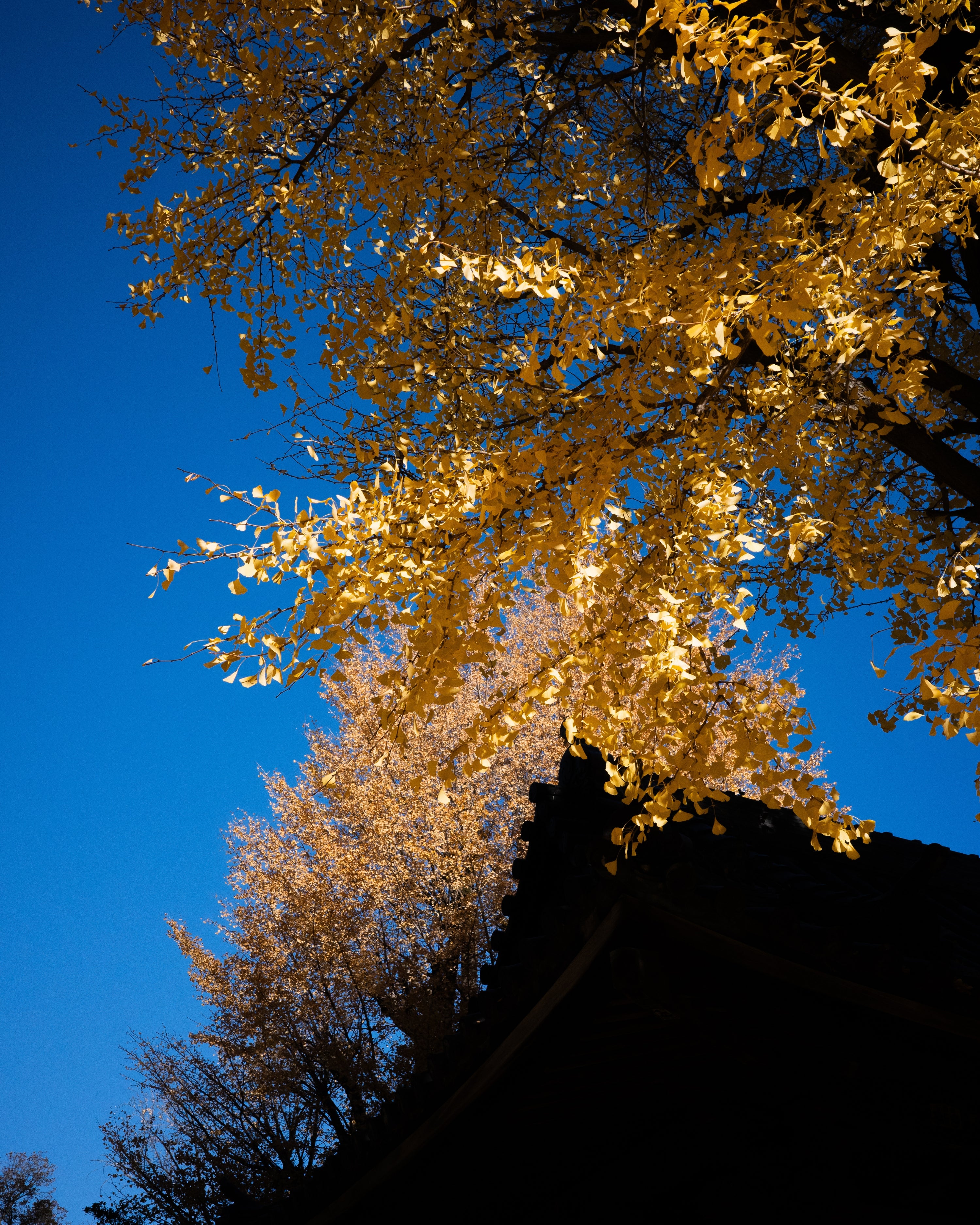THE HISTORY, CRAFTSMANSHIP AND THE CULTURE OF A PLACE
A watch is not merely a timekeeping tool nor a fashion accessory but it also contains the history, craftsmanship and culture of a place. Founded in Japan in 2022, Kintoshi Kyoto is a brand with a vision to create unique and timeless mechanical watches and other products that incorporate elements of Japan's deep culture, traditional craftsmanship and natural landscapes.
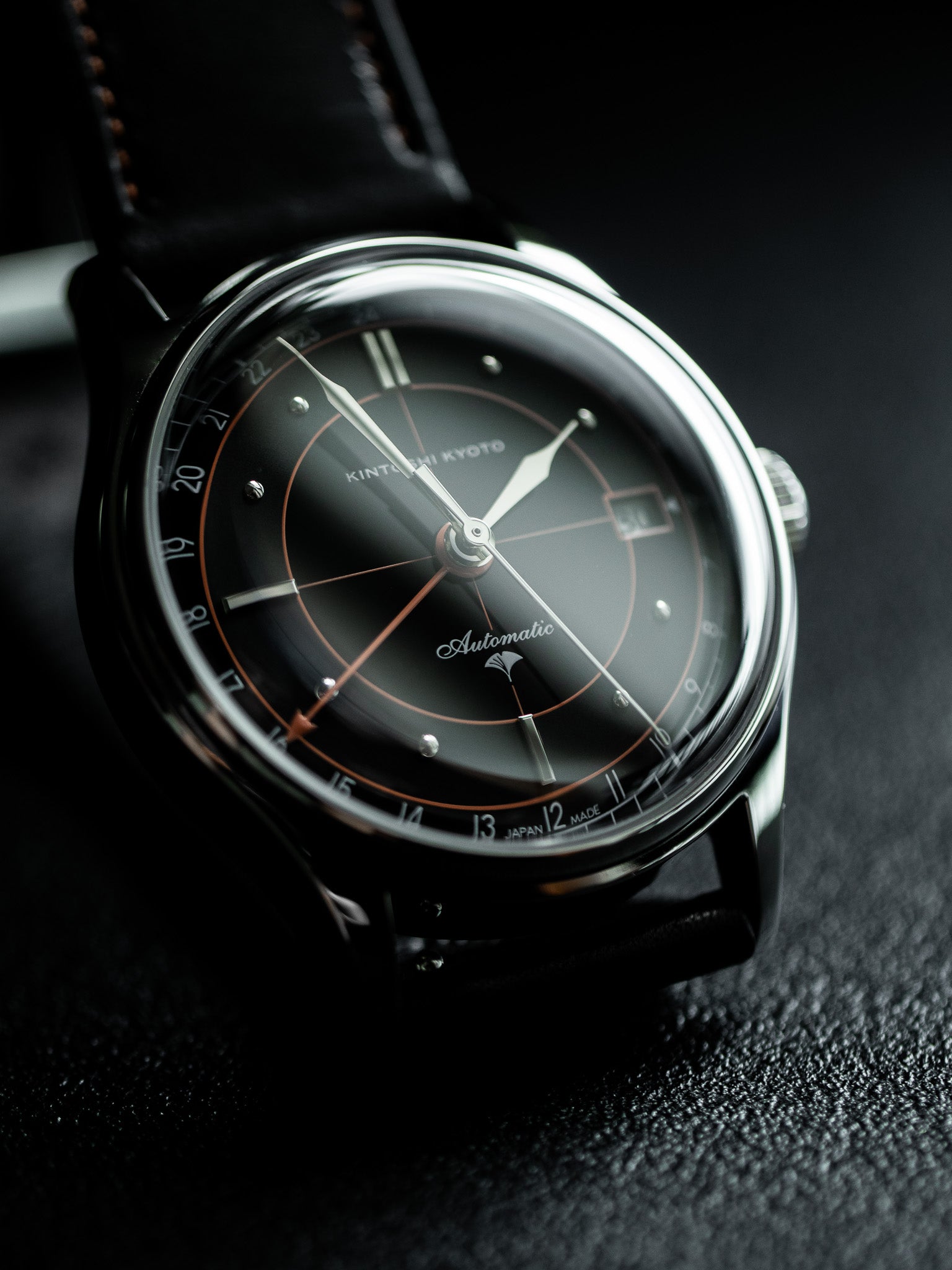
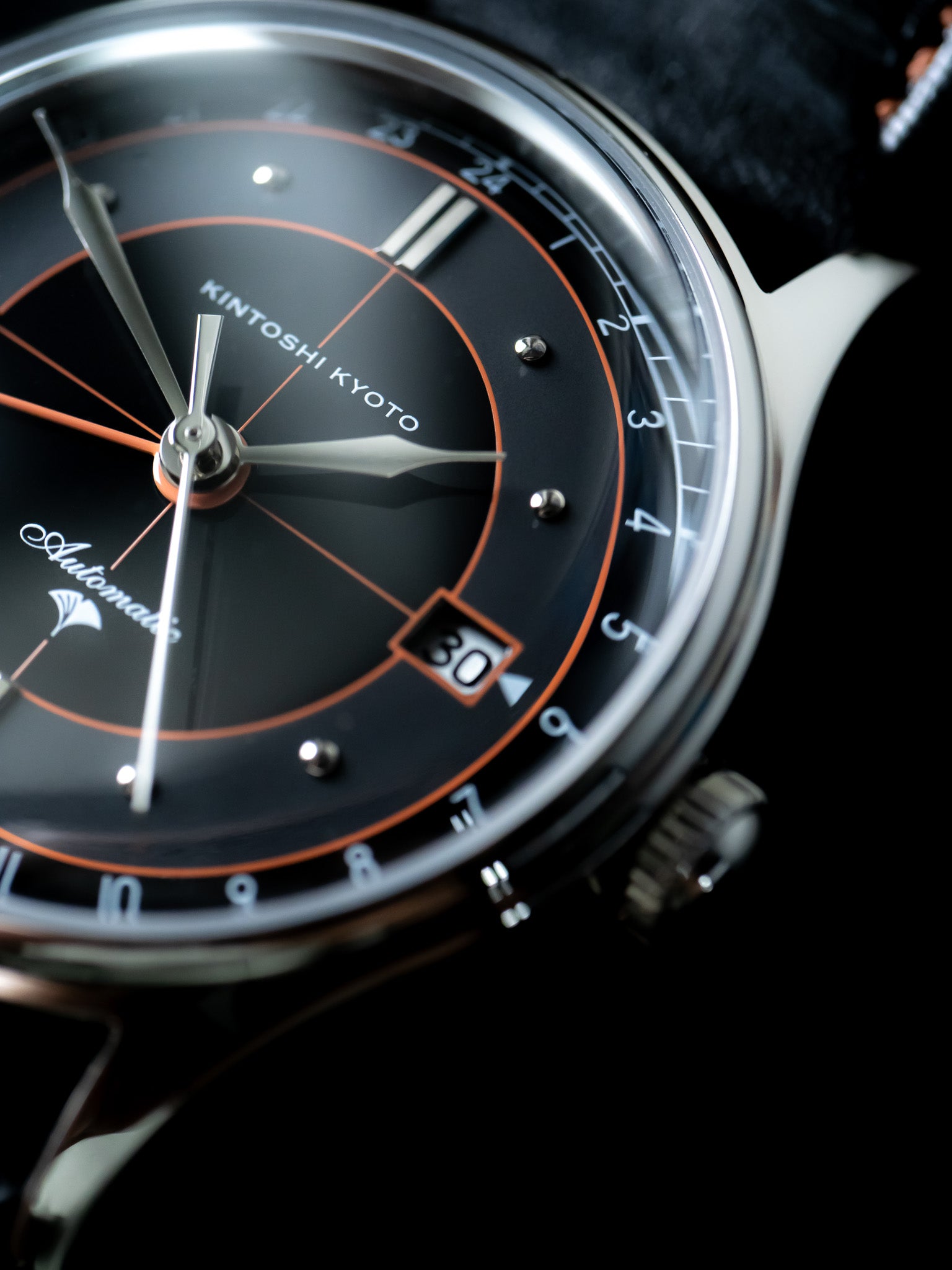
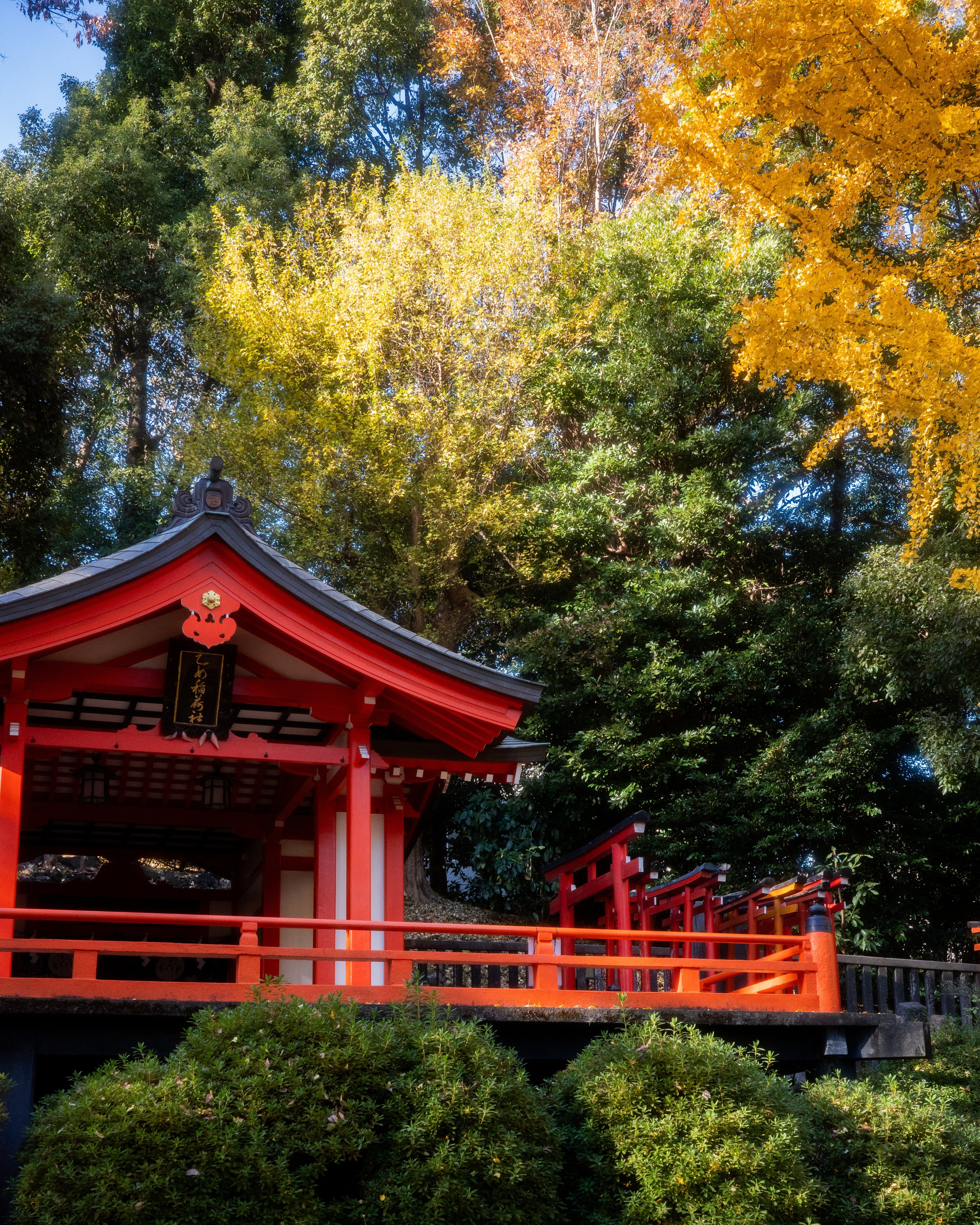
The Design
Ginkyo
Kintoshi Kyoto's creations are rooted
in Japan's rich cultural heritage; among them, the Ginkyo leaf (Ginkyo) serves as an aesthetic design element. Its multiple cultural symbols span generations of history and have become a source of inspiration for new works.
The Ginkyo leaf is present in various aspects of traditional Japanese art, from painting, calligraphy, and tea ceremonies to floral arrangements and kimono weaving. It has survived wars and natural disasters, symbolizing resilience and endurance, bringing hope and strength to the Japanese people.
Kintoshi Kyotoの創作は、日本の豊かな文化遺産に根ざしています。その中で、イチョウの葉(Ginkyo)は美的デザインの一部として、多様な文化的象徴が世代を超えて受け継がれ、今日の新しい作品のインスピレーションの源となっています。
イチョウの葉は、絵画、書道、茶道、花道、そして着物の織りに至るまで、日本の伝統的な芸術のさまざまな側面に広がっています。戦争を生き延び、自然災害からも免れたイチョウは、強靭さと耐久性を象徴し、日本人に希望と力をもたらします。
The Design
嵐山ウォッチフェイス
Kintoshi Kyoto's design concept hopes to integrate traditional Japanese craftsmanship into mechanical watches, thus presenting a unique style. In terms of color, our Egelance series - (Arashiyama Surface) is a reference to Kyomizu-yaki, a traditional pottery craft in Kyoto that began in the Edo period.
Kintoshi Kyoto のデザインコンセプトは、日本の伝統工芸を機械式腕時計に融合させることで、独自のスタイルを打ち出すことを目的としています。Egelance シリーズ(嵐山ウォッチフェイス)のカラーは、江戸時代から続く京都の伝統工芸 — 清水焼(Kyomizu-yaki)をベースにしています。
The Design
嵐山ウォッチフェイス
Kintoshi Kyoto's design concept hopes to integrate traditional Japanese craftsmanship into mechanical watches, thus presenting a unique style. In terms of color, our Egelance series - (Arashiyama Surface) is a reference to Kyomizu-yaki, a traditional pottery craft in Kyoto that began in the Edo period.
Kintoshi Kyoto のデザインコンセプトは、日本の伝統工芸を機械式腕時計に融合させることで、独自のスタイルを打ち出すことを目的としています。Egelance シリーズ(嵐山ウォッチフェイス)のカラーは、江戸時代から続く京都の伝統工芸 — 清水焼(Kyomizu-yaki)をベースにしています。
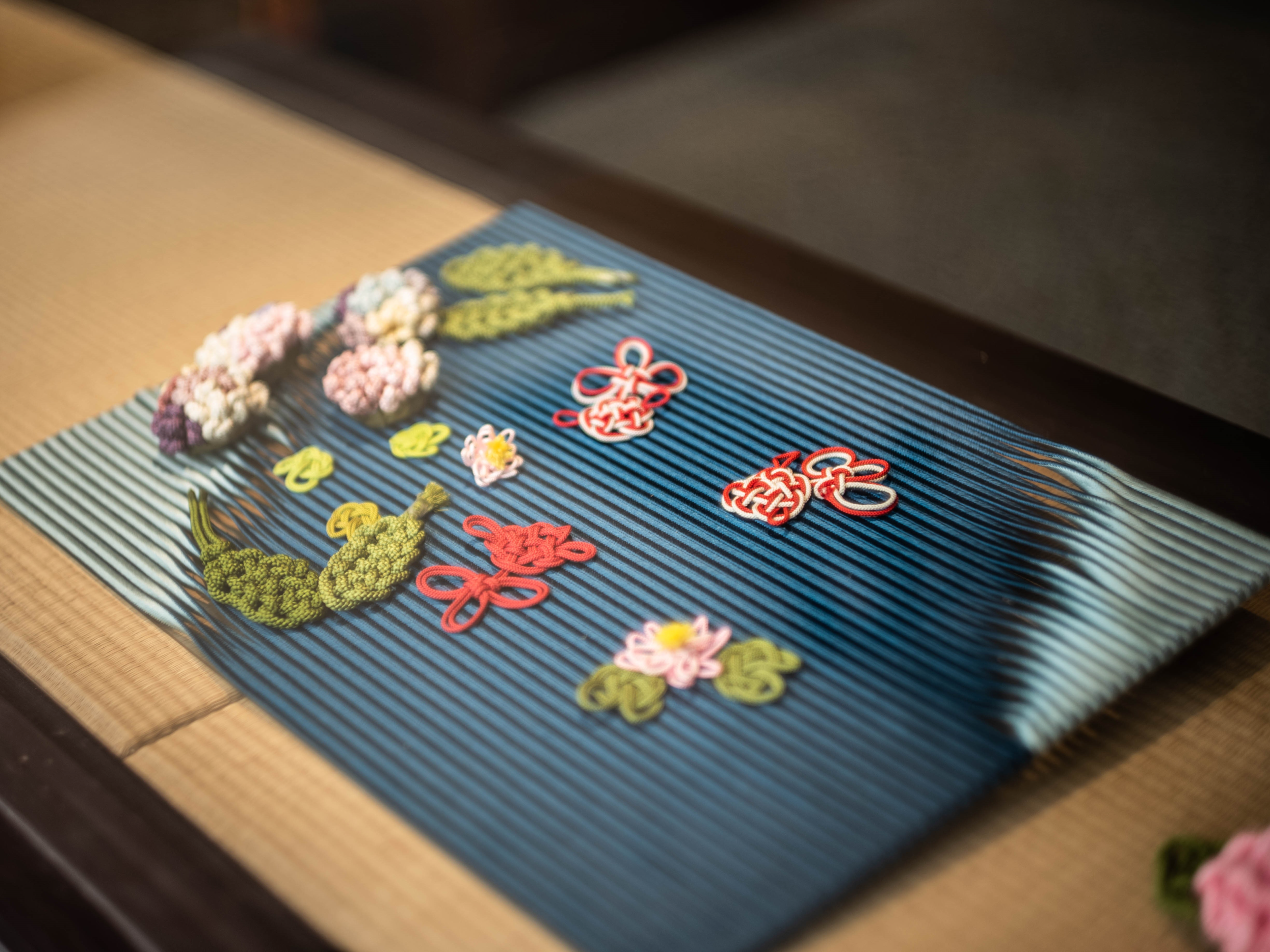
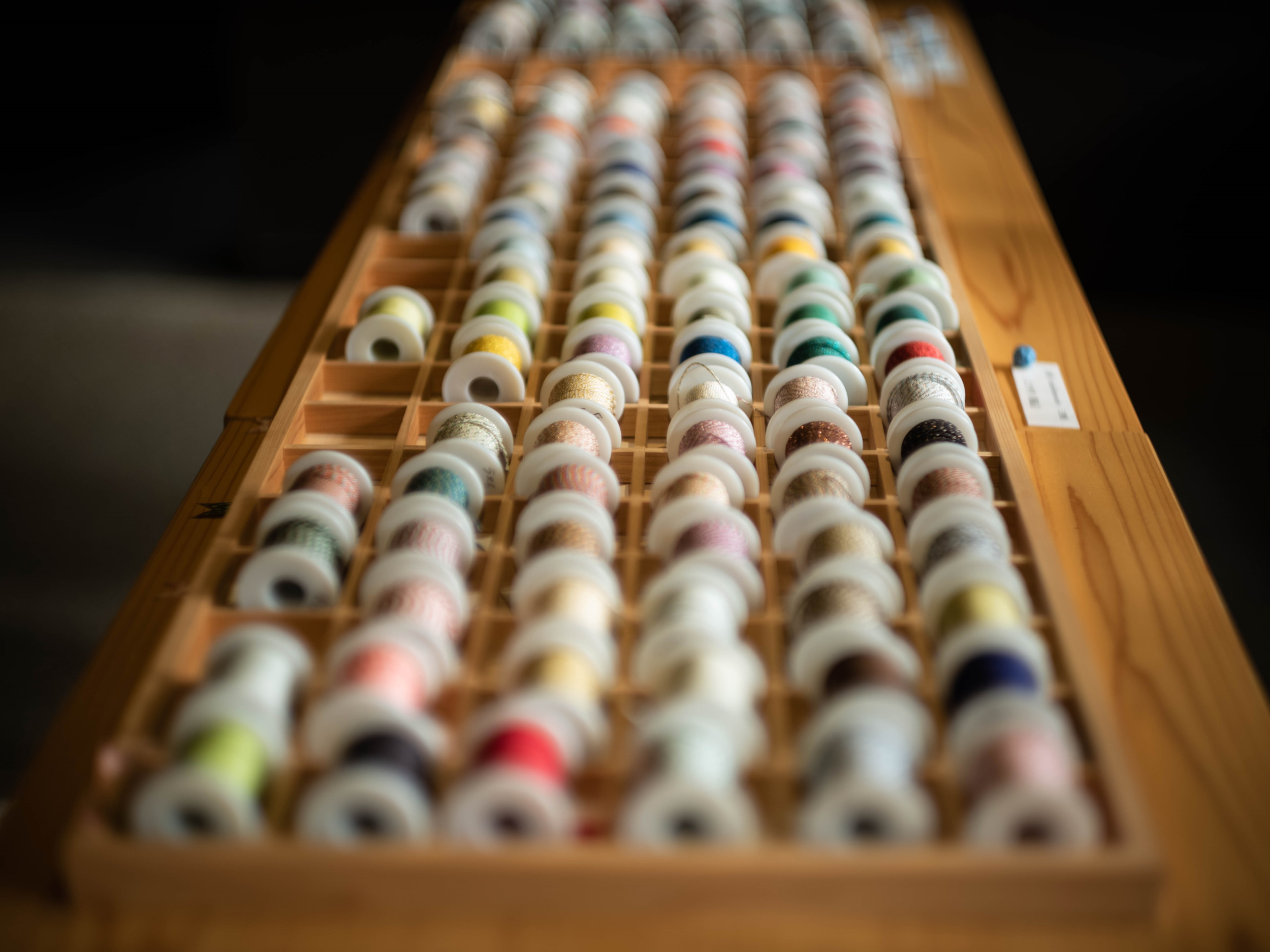
The hand-knit
日本の伝統技法「大和組」
To further exhibit the unique Arashiyama dial design of the
Egelance series, Kintoshi Kyoto is now presenting a mobile phone woven knot accessory hand-knitted by Showen Kumihimo exclusively for us. The knots are hand-knitted with traditional Japanese "Yamatogumi" technique and are different from the relatively fancy twisted weaving method. Yamatogumi mainly uses a straight weaving method to highlight the natural luster of silk. It is a "hand-knit" weave method commonly used in high-end kimono accessories. With the smoother appearance of the webbing, a slight defect will greatly reduce the quality of the webbing. In addition to the weaving itself, straightening out the silk threads has become the key to the entire weaving process.
今回KINTOSHI KYOTOは、エジェランスシリーズ独自の嵐山時計のデザインをさらに昇華させるべく、昇苑組紐が弊社向けに織り上げた電話コードのアクセサリーを時計と共にご紹介いたします。
コードは日本の伝統技法「大和組」により手編みされています。
相対的に派手な撚り織りとは異なり、大和組では絹本来の光沢を際立たせる直線織りが主となっており、高級和装小物によく用いられる「手編み」の織り方です。
織りの外観が通常より滑らかであるため、わずかな欠陥で品質が大幅に下がってしまいます。織り自体に加えて、絹糸をまっすぐに整えることが織りプロセス全体の鍵となっています。
Showen Kumihimo
Showen Kumihimo, a Japan's leading hand-woven cloth artisan, established his own brand with his name in Uji City, Kyoto in 1948. For many years, he insisted on using traditional weaving techniques combined with modern processing to hand-knit kimono belts and various accessories. He enjoyed a high reputation both in Japan and abroad. Yamatogumi applied this time is precisely the perfect technique Showen Kumihimo good at. We wish to demonstrate Kintoshi Kyoto's obdurate commitment to traditional Japanese craftsmanship and watch design through Yamatogumi's precise weaving.
1948年、昇苑組紐は日本でも指折りの手織り布工芸として、京都府宇治市で創業しました。長年にわたり伝統的な編み技術を守り、また現代的な加工方法もとり合わせて、手編みによる和装用腰帯及び各種のアクセサリーは、国内外で高く評価されています。
今回の大和組は、まさに昇苑組紐が得意とする組紐です。
KINTOSHI KYOTOは日本の伝統工芸と時計デザインに妥協を許さないこだわりを、大和組の丁寧な織りとそれが放つ美しい光沢で表現したいと願っています。
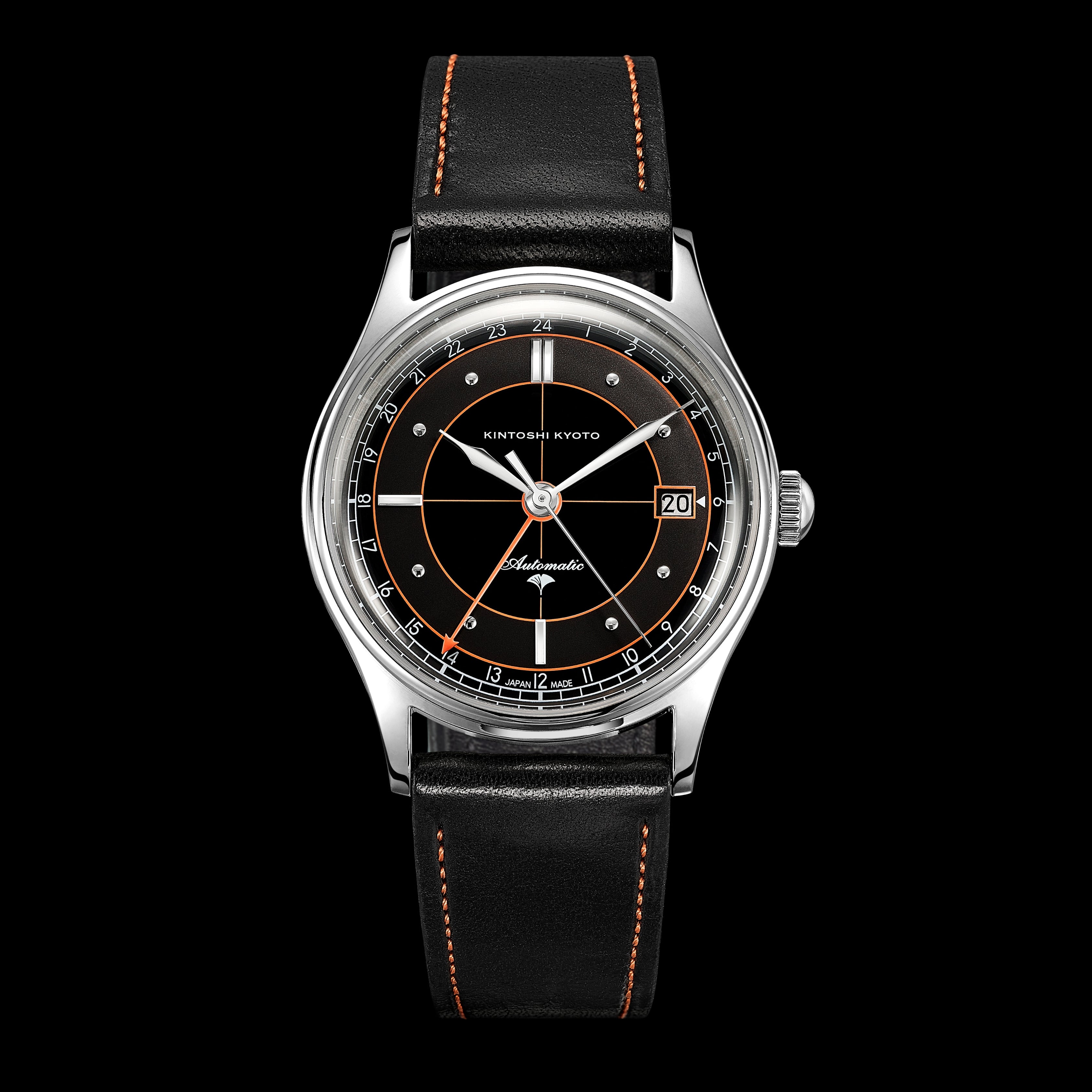
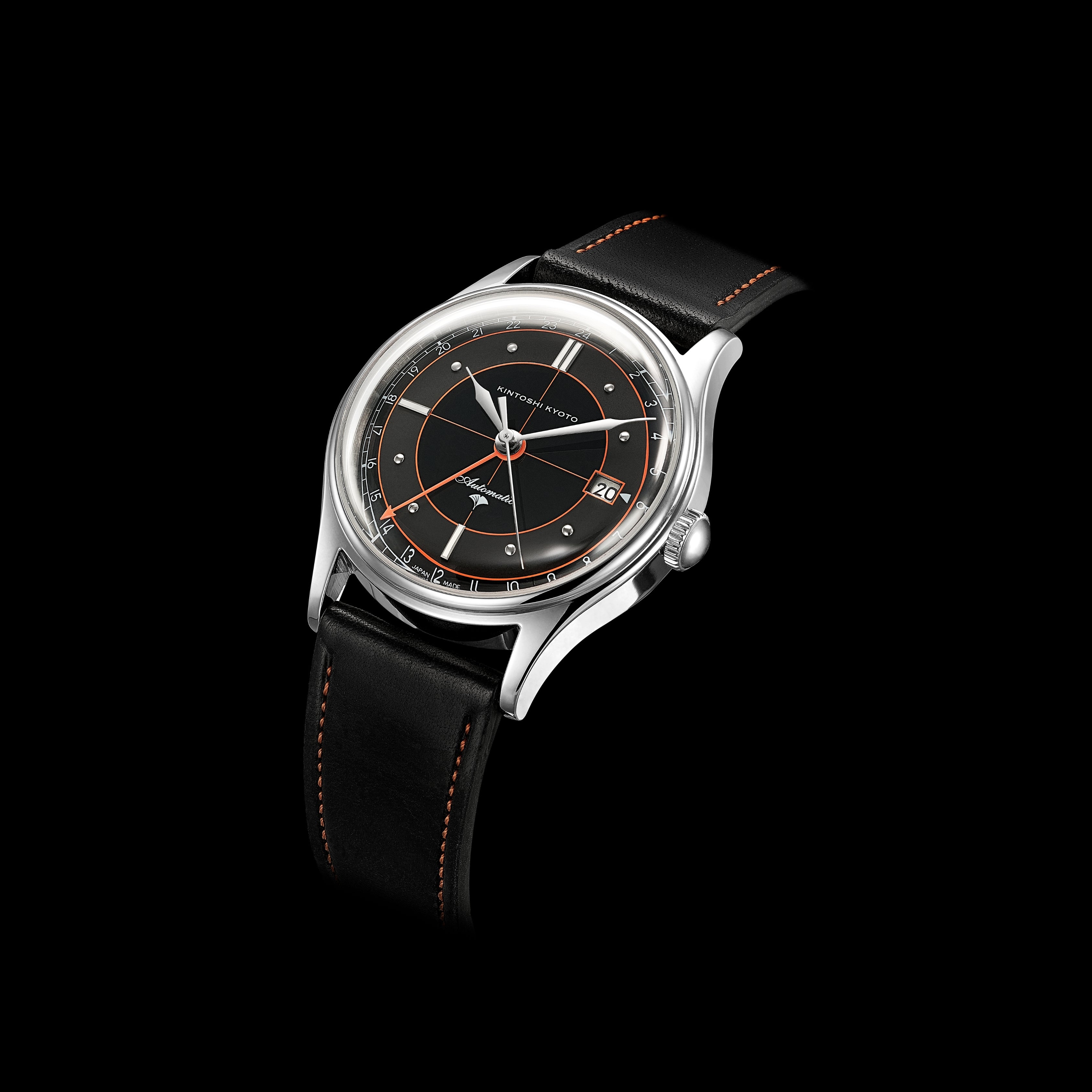
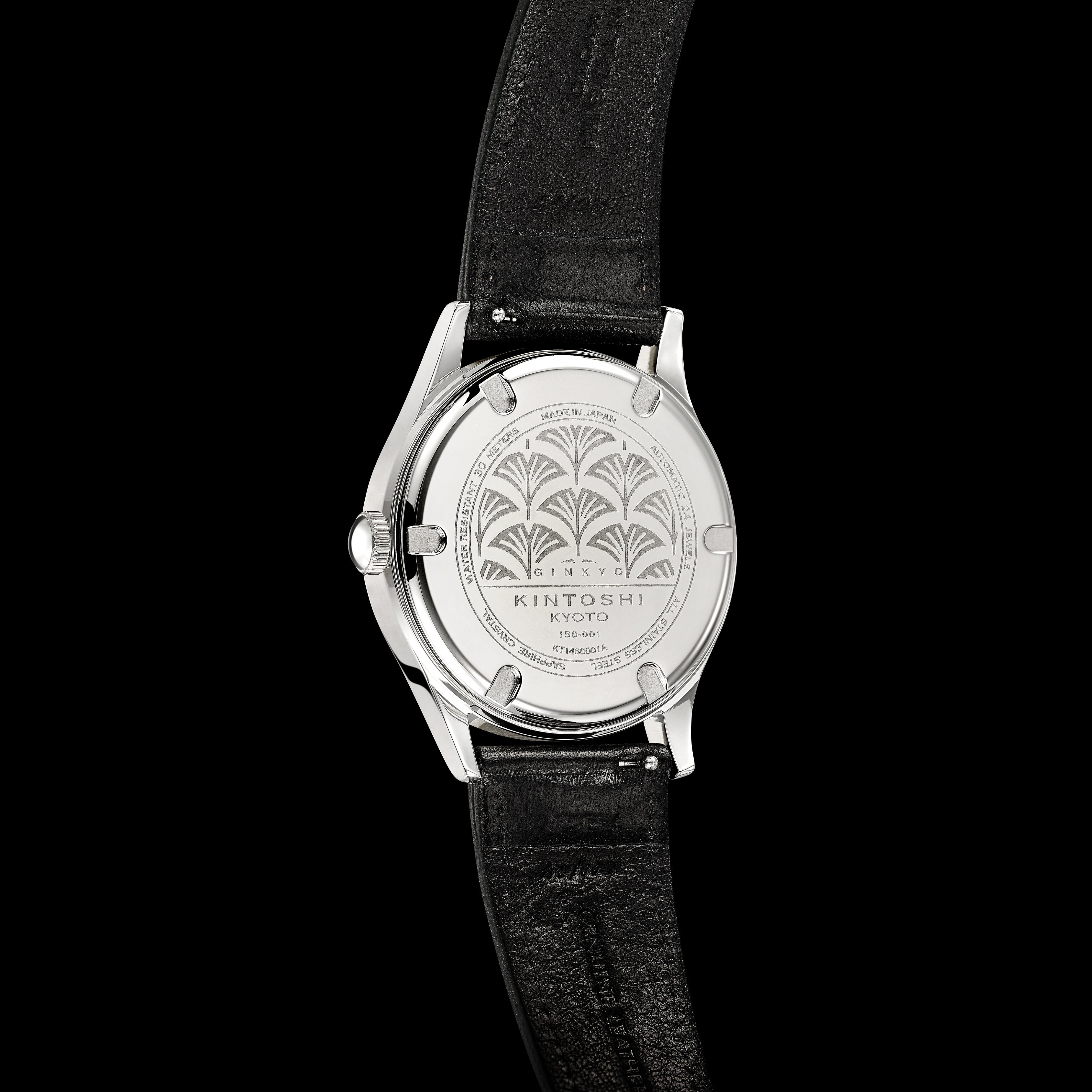
Kintoshi Kyoto
GINKYO - KT1460001A
Kintoshi Kyoto's creations are rooted
in Japan's rich cultural heritage; among them, the Ginkyo leaf (Ginkyo) serves as an aesthetic design element. Its multiple cultural symbols span generations of history and have become a source of inspiration for new works.
The Ginkyo leaf is present in various aspects of traditional Japanese art, from painting, calligraphy, and tea ceremonies to floral arrangements and kimono weaving. It has survived wars and natural disasters, symbolizing resilience and endurance, bringing hope and strength to the Japanese people. Its fan-like shape, with two symmetrical lobes curving outwards while converging at the leaf stem, represents harmony. The Ginkyo watch connects different time zones through its dual-time functionality, elevating the Ginkyo leaf's multiple cultural symbols to another level.
The dial features a dual-section layout, primarily in black, with a matte-finished time ring slightly tinted gray. The polished mirror hour markers are separated by powder orange lines,
evoking the scene of late autumn under a Ginkyo tree, creating a striking contrast. The 24-hour digital scale encircles the outer edge, while the track-style minute markings are highlighted in white for easier time reading.
The central area features line coordinates visually connecting to the date window at the 9 o'clock position, with four central hands performing their functions, and the dual-time hands also indicated in powder orange, showcasing a well-balanced aesthetic design.
The watch features a streamlined stainless steel case, with polished details giving it a perfect texture.
Inheriting the design of last century's watches, it is equipped with a curved sapphire crystal glass that enhances the three-dimensional perspective, showcasing a strong retro style. Upholding the brand's exquisite watchmaking craftsmanship, the watch is powered by a Japanese-made 9075 ultra-thin automatic dual-time movement, with a thickness of 4.92mm, featuring a hacking function and a single crown for independent adjustment of the second time zone hand. The black leather strap comes with a quick-release mechanism, embracing
nostalgia while meeting modern needs.
Kintoshi Kyotoの創作は、日本の豊かな文化遺産に根ざしています。その中で、イチョウの葉(Ginkyo)は美的デザインの一部として、多様な文化的象徴が世代を超えて受け継がれ、今日の新しい作品のインスピレーションの源となっています。
イチョウの葉は、絵画、書道、茶道、花道、そして着物の織りに至るまで、日本の伝統的な芸術のさまざまな側面に広がっています。戦争を生き延び、自然災害からも免れたイチョウは、強靭さと耐久性を象徴し、日本人に希望と力をもたらします。扇のような形状で、二つの対称的な葉が外側に曲がりながら、葉柄の部分で一つに集まる様子が調和を表しています。Ginkyo腕時計は、二つの時間帯をつなぐ機能を通じて、イチョウの葉の多様な文化的象徴を別のレベルに高めています。
文字盤は二段構成のレイアウトで、主に黒色で、マット仕上げの時間リングはわずかに灰色がかった色合いです。ポリッシュされたミラーの時刻表示は、粉オレンジのラインで区切られ、晩秋のイチョウの木の下にいるかのような印象を与え、鮮やかなコントラストを生み出します。24時間のデジタルスケールが外周を囲み、トラックスタイルの分表示は白く強調され、時間の読み取りが容易になります。中央部分には線の座標があり、視覚的に9時の位置の日時ウィンドウとつながり、中央の4本の針がそれぞれの役割を果たし、二つの時間の針も粉オレンジで示されており、美的デザインが見事に調和しています。
腕時計は流線型のステンレススチールケースを採用し、ポリッシュされたディテールが完璧な質感を与えています。昨世紀の腕時計のデザインを継承し、曲面のサファイアクリスタルガラスを装備することで、立体的な視覚効果を強調し、強いレトロスタイルを表現しています。ブランドの卓越した時計製造技術を受け継ぎ、日本製の9075超薄型自動二つの時間帯のムーブメントを搭載しており、厚さは4.92mmで、ストップセコンド機能を備え、単一のリューズで第二の時間帯の針を独立して調整できます。黒のレザーのストラップにはクイックリリース機構があり、懐かしさを抱きつつ、現代のニーズにも対応しています。


